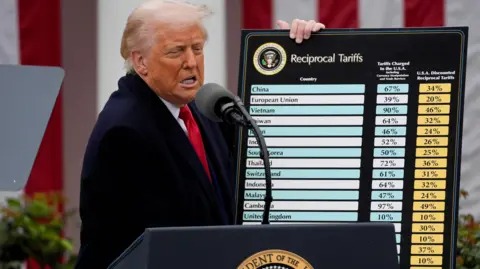In a rapidly shifting global economy, tariff news has taken centre stage. From major reform initiatives to new trade barriers, the developments this year are shaping export‑import landscapes and influencing business strategies worldwide Tariff News. Below is a clear, simple overview of the key themes, major movements, and what they mean.
1. Major Reform Moves
Countries are rethinking their tariff regimes. For example, the government of Pakistan unveiled a draft National Tariff Policy 2025‑30 that aims to simplify tariff slabs and phase out additional duties. ProPakistani+2Arab News+2 The plan includes a four‑tier structure (0 %, 5 %, 10 %, 15 %) and the phasing out of extra customs and regulatory duties. Arab News
Similarly, Pakistan announced that it would cut its overall tariff regime by more than 4 % over the next five years, removing additional duties on thousands of tariff lines. Arab News+1
These reforms signal a push toward export‑led growth, more transparent tariff frameworks, and enhanced competitiveness for domestic industries.
2. Trade Disruptions and Increased Duties
While reforms are underway in some places, other regions are increasing tariffs. For example, new duties are being applied on certain import categories, sometimes to protect domestic industries or respond to international trade tensions. Dawn+1
In one case, Pakistan was subject to a significant tariff increase from the U.S., which could affect its export competitiveness. ProPakistani
These shifts reflect the tug‑of‑war between domestic protectionism and globalisation.
3. Impacts on Exports, Imports & Industry
Tariffs are not just policy statements—they have real consequences:
-
For businesses: Higher tariffs on raw materials and intermediate goods raise production costs and can reduce competitiveness abroad. (Seen in Pakistan’s case where higher duties may affect key sectors.) Dawn+1
‑ For exporters: Simplified tariff regimes and duty removal can boost export potential and open new markets.
‑ For consumers: Tariff hikes can lead to higher prices, fewer choices, or companies absorbing the cost.
‑ For trade systems: Tariff shocks may force companies to restructure supply chains or shift production.
4. Key Trends to Watch
-
Simplification of tariff structures: As seen in Pakistan’s initiative, many governments aim for fewer tiers, fewer exceptions, and clearer rules.
-
Focus on raw materials and intermediate goods: Prioritising lowering tariffs on these helps local industries to compete globally. ProPakistani+1
-
Balancing protection vs openness: Governments are under pressure from domestic industries to maintain high tariffs, while also seeking to integrate globally. Dawn+1
-
Trade‑political linkages: Tariffs are increasingly used as tools in broader trade diplomacy and global supply‑chain positioning.
-
Industry‑specific impacts: Sectors like textiles, engineering, pharmaceuticals, IT are often targeted for tariff benefits or protections. ProPakistani+1
5. What This Means for Businesses and Individuals
-
If you’re a business owner or exporter, it’s crucial to monitor tariff changes in your sector and country. The cost of inputs, the access to foreign markets, or the competitiveness of your product may change.
-
If you’re an importer or consumer, increased tariffs might lead to higher prices or reduced availability of certain goods.
-
For policy watchers and analysts, tariff news signals larger macro trends: trade liberalisation vs protectionism, shifts in global supply chains, and geopolitical trade dynamics.
Keywords & Tags to Know
Use these keywords when following or writing about tariff news:
Tariff reform, tariff structure, customs duty, regulatory duty, export‑led growth, trade protection, trade liberalisation, additional customs duty (ACD), regulatory duty (RD), tariff slab, trade policy, supply‑chain shifts, import costs, export competitiveness.
Final Thoughts
Tariff news in 2025 is characterised by reform efforts in some countries and rising protection in others. The net effect: businesses and economies must adapt. Tariffs are no longer static background policies—they are active levers influencing market access, cost structures, and global competition.
Keeping an eye on tariff developments is more important than ever if you are connected to trade, manufacturing, exports or imports.
